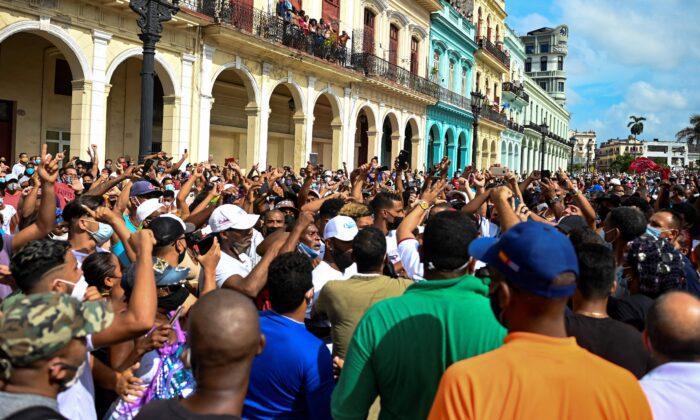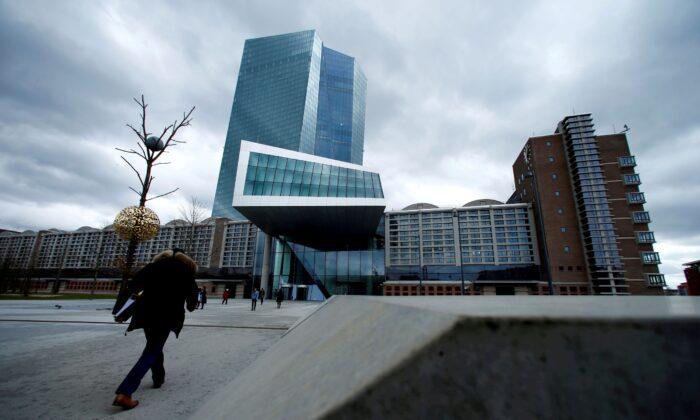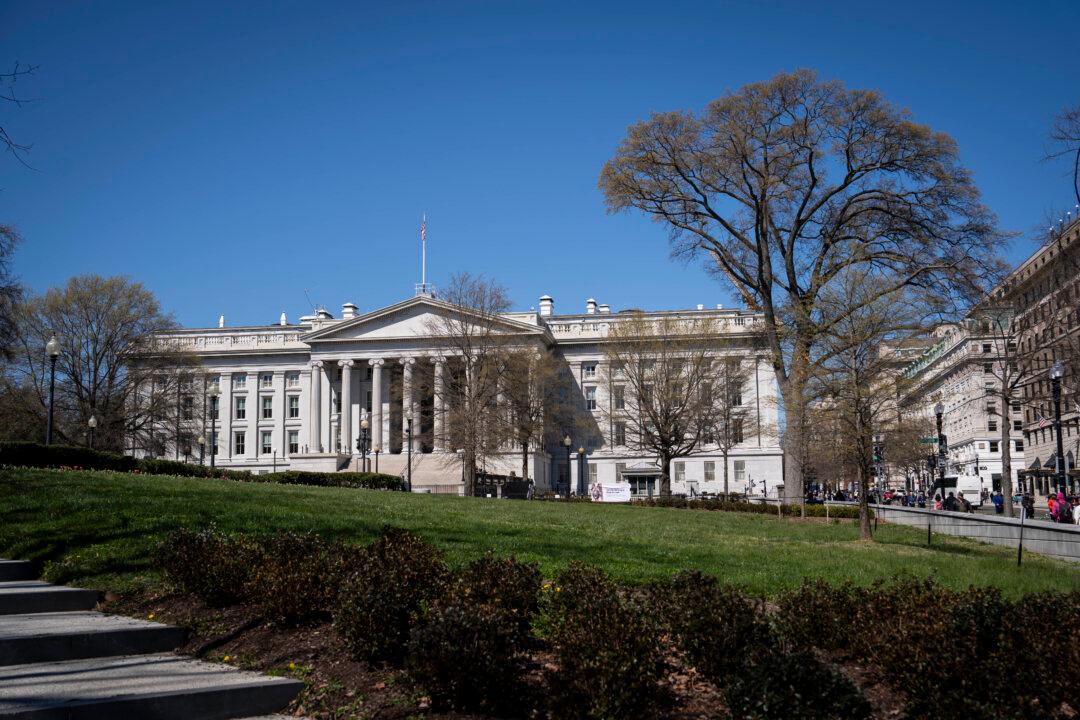Commentary
Cuba is a dictatorship that uses terror and propaganda to repress its people. It locks up citizens, strips them of the most basic human rights, silences them, and confronts families using extortion and threats.
The regime’s constant practices of illegal detention, personal ruin of political dissidents, and limitation of fundamental rights have nothing to do with any blockade or embargo but everything to do with the totalitarian communist dictatorship.
All the propaganda that whitewashes the Cuban dictatorship is based on two lies: the nonexistent “blockade” and the allegedly excellent “public health system.”
Cuba only suffers from one blockade: that of the dictatorship against its people, which limits imports of food, medicine, use of the internet, and freedom to travel. We saw the evidence last week when the regime “temporarily lifted” duties on imports of food and medicine.
Health Care Lie
Dismantling the lie of the so-called excellent Cuban public services is easy. You just have to go to Cuba to see it.The health care system that the regime advertises so much is a failed and dilapidated system that only provides quality service to
wealthy foreigners and to the regime’s leaders. Cuba suffers the “most expensive free health care in the world,” as they told me in Havana.
The myth of the quality of health care has been debunked on several occasions. María Werlau, from the NGO Archivo Cuba Archive, told Spain’s
ABC newspaper that “health care in Cuba is terrible for the ordinary citizen. There is an apartheid that favors the ruling elite and foreigners who pay in U.S. dollars.” It has been shown that the Cuban health system “lacks transparency and accountability.” Its health policies not only haven’t yielded good results but also limit the basic rights of patients; “it is hardly a model to follow,” according to a 2018 article in the journal
Health Policy and Planning.
Anyone who travels to Cuba can see that the often-repeated “non-existence of child malnutrition” that some say UNICEF shows is a lie and only masks a regime that still uses ration cards and misery as tools to keep the population under its boot.
However, UNICEF never stated that Cuba had ended child malnutrition, but that the incidence of underweight children has dropped to 4 percent, a record broken by Chile, for example, which reached 1 percent. In UNICEF’s 2009 report (
pdf) “Tracking Progress on Child and Maternal Nutrition: A survival and development priority,” it shows clearly how other countries have done significantly better than Cuba.
The actual data on infant mortality is twice the official figure and much worse than in countries such as Chile and Costa Rica,
according to studies.
The Blockade Myth
The myth of the blockade is even more hilarious. The nonexistent blockade is a lie that serves as an excuse to whitewash the dictatorship.
Cuba’s international trade was 27 percent of GDP in 2020, compared, for example, with Brazil, which was 32 percent, according to
World Bank data. Its exports were
14.5 percent of GDP, compared to 16.9 percent in Brazil.
The United States is Cuba’s ninth-largest trading partner, with 3 percent of imports. Cuba has more than 27 bilateral treaties with more than 90 countries and
exports to Canada (22 percent), China (21 percent), Venezuela (13 percent), Spain (11 percent), Holland (7 percent), Germany, Belgium, Switzerland, Cyprus (2 percent each), and France (1 percent), among others.
The exports of food and agricultural products to Cuba from the United States increased by 74.7 percent in March, an increase of 54.3 percent annualized (
pdf).
Cuba, in turn, imported goods from Venezuela (crude at cost or free), China, Spain, Russia, Mexico, Italy, Argentina, Brazil, and Germany, and others.
The only thing Cuba has is an embargo on those items that the dictatorial regime uses for military purposes.
What the left hides about the embargo: The embargo was implemented in 1958 with the Batista regime to limit the sale of weapons. The 1960 embargo on U.S. exports to Cuba didn’t include food or medicine. Since 2000, there has not been any embargo on U.S. exports of food or medicine.
More than 90 North American multinationals have exported to Cuba since 2001. Since 2014, 60 North American companies have been operating directly in Cuba, according to the
U.S.–Cuba Trade and Economic Council.Cuba exported goods totaling $14.9 million to the United States and imported $176.8 million in 2020, according to the
U.S. Census Bureau. Imports and exports to China are also particularly important.
“The United States is the largest provider of food and agricultural products to Cuba,” according to the
Department of State, “with exports of those goods valued at $220.5 million in 2018. The United States is also a significant supplier of humanitarian goods to Cuba, including medicines and medical products,” with a total value of $275.9 million in 2018. Remittances from the United States, estimated at $3.5 billion in 2017, are the dictatorship’s largest source of foreign exchange.
Destroyed by Communism
What has destroyed Cuba is communism, a destructive and wasteful dictatorial regime.
The Castro regime was a machine for squandering subsidies. It consumed aid from the Soviet Union between 1960 and 1990 equivalent to five Marshall Plans and failed to improve its growth pattern or take advantage of huge subsidies to improve productivity. Between 1960 and 1990, Cuba is estimated to have received more than $65 billion from the Soviet Union,
not counting what it received from other socialist countries.
The Cuban dictatorship has squandered subsidies and aid from China, Russia, and Venezuela.
China has also forgiven $6 billion in debt to Cuba, more than half of the total debt it has forgiven its trading partners over the 18 years to 2018 (
pdf). Of course, trade with China has declined due to the constant defaults of the Cuban dictatorial regime.
Between 2011 and 2014 alone, Mexico, Japan, China, and Russia together exempted $40 billion of debt from the Cuban dictatorship, which is equivalent to 50 percent of Cuba’s 2019 GDP, according to
Forbes. The Paris Club creditors in 2015 also canceled $
8.5 billion in outstanding debt.
The Cuban dictatorship always does the same: borrow, squander money, impoverish the population, and default on its commitments. And then it complains about a nonexistent “blockade.”
If we add donations, debt cancellation, and financial support, Russia, China, Venezuela, and Cuba’s main trading partners have given financial aid and donations to the Cuban dictatorship that exceed $200 billion in the past 16 years.
Despite all this, and with a monetary policy as destructive as that of Venezuela, printing Cuban pesos without value or demand while squandering the reserves it receives, inflation in 2021 will reach 500 percent, according to
Reuters.
What has the Cuban dictatorship done with all this money? Dilapidate the country while condemning the Cuban people to misery.
What is it that destroyed Cuba? Communism, not the nonexistent blockade.
Daniel Lacalle, Ph.D., is chief economist at hedge fund Tressis and author of “Freedom or Equality,” “Escape from the Central Bank Trap,” and “Life in the Financial Markets.”
Views expressed in this article are opinions of the author and do not necessarily reflect the views of The Epoch Times.






Friends Read Free